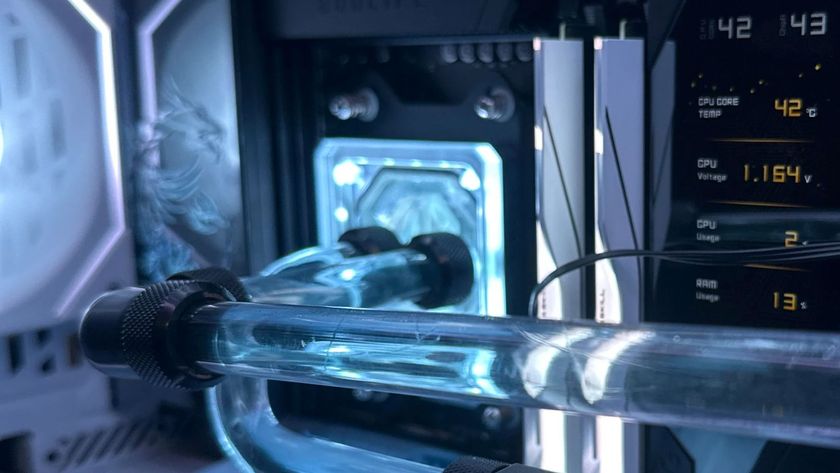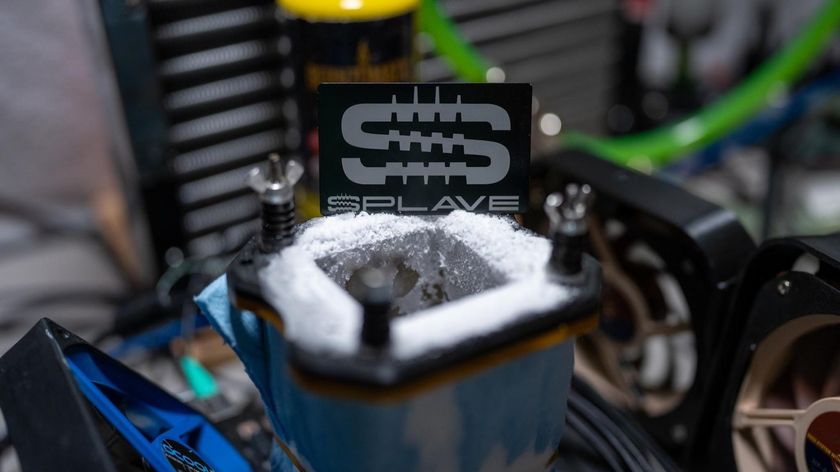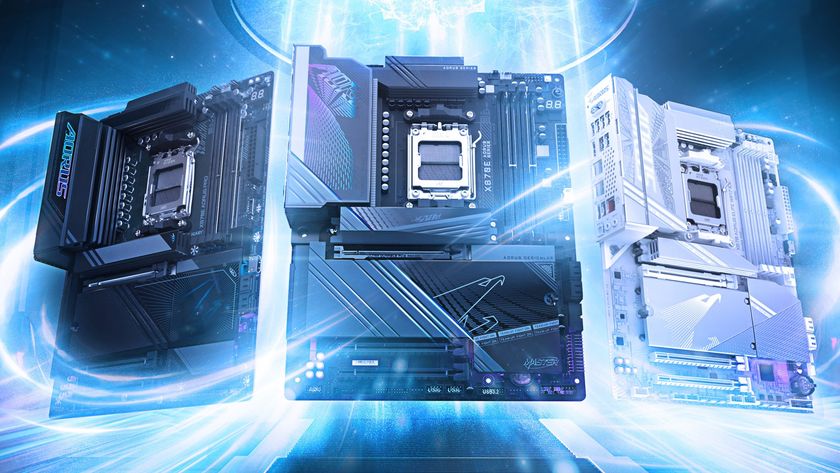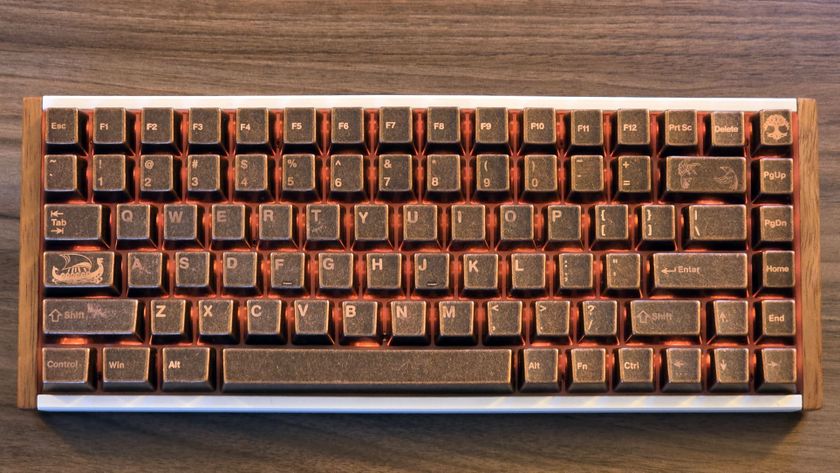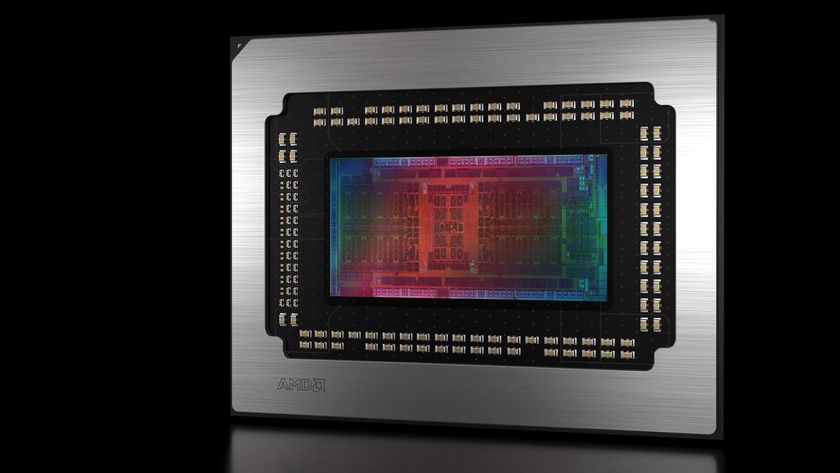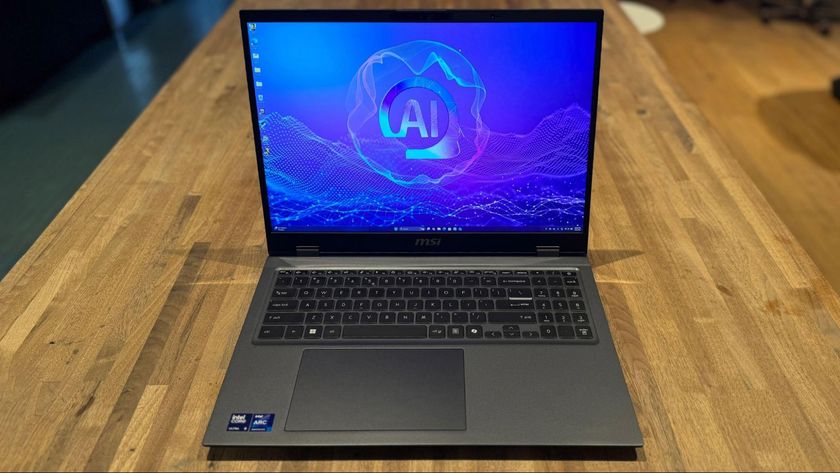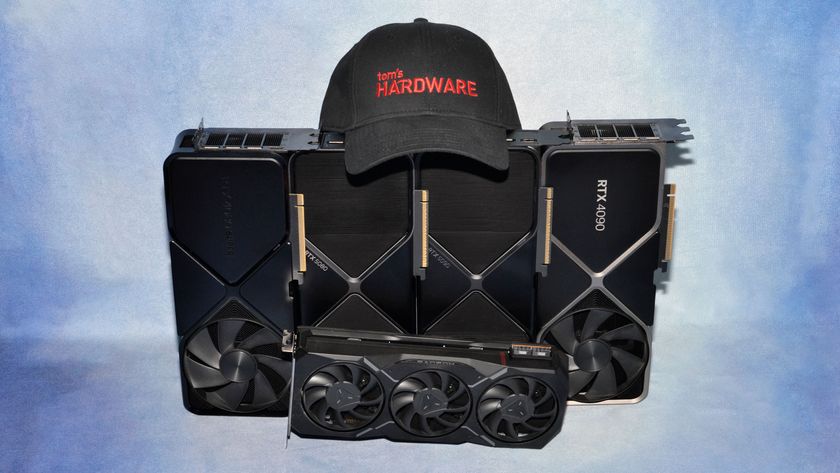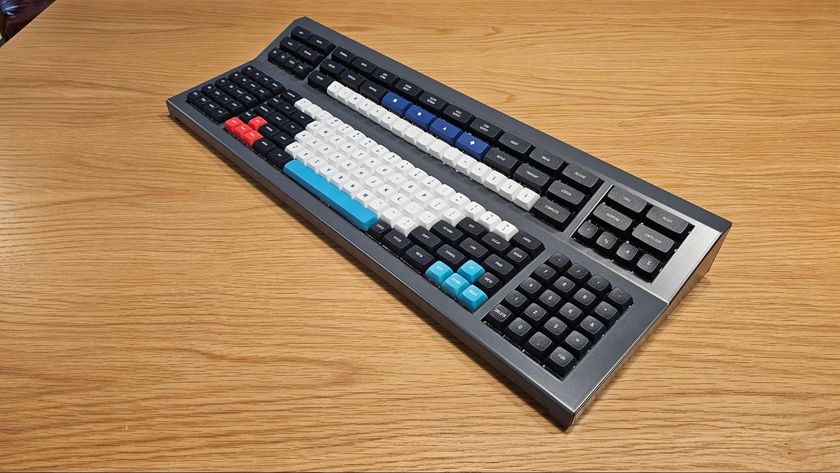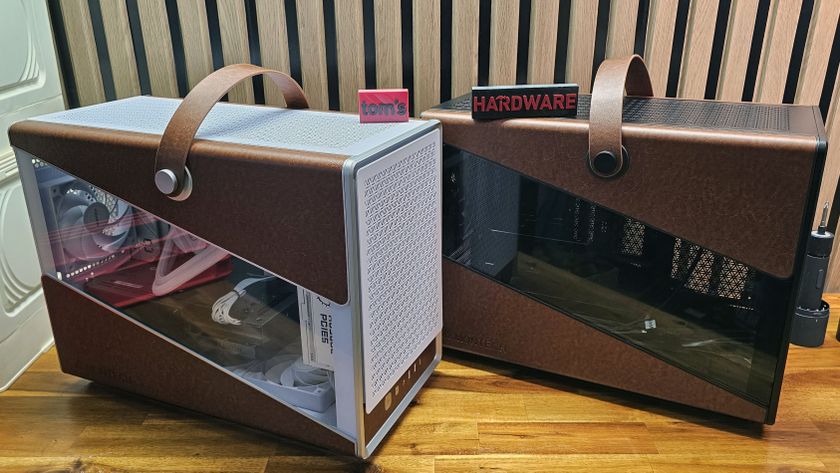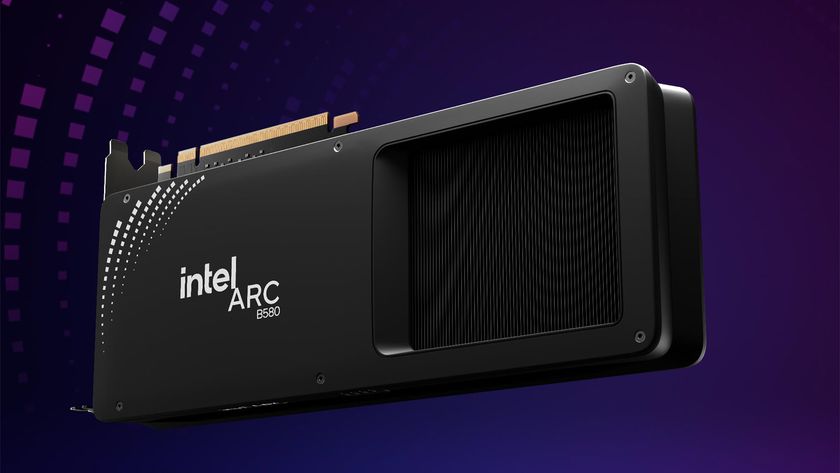How I Overclocked Core i9-10900K to 7GHz and Set World Records
With the right tools, Intel's Core i9-10900K can reach epic clock speeds.
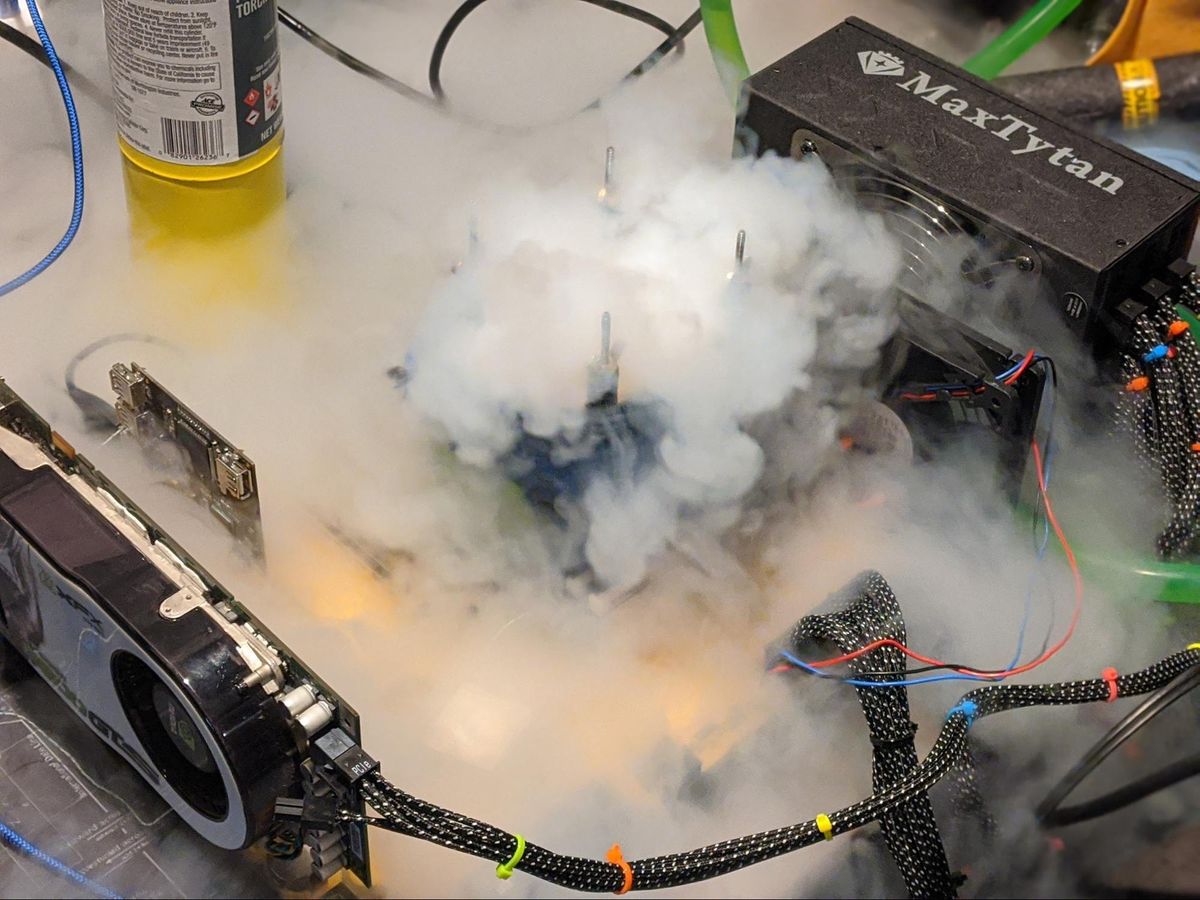
Intel's latest and greatest consumer chip, the Core i9-10900K has been criticized, including in our review, for its massive power consumption and all the heat it generates. But this new 10-core chip is an absolute CPU overclocking beast, if you have the right equipment and you know how to use it, as I did when I set several world records, getting a clock speed as high as 7,083 MHz.
Due to its lower price and more reasonable power use, the Core i5-10600k is the daily driver of Intel's new Comet Lake S lineup. But the Core i9-10900K is the chip you take to the track on weekends. Yes, it uses a lot of power; it's loud, and it’s raw, but I don't care.
Intel’s 14nm++++++ (or whatever the current joke is) process is as refined as 110 octane fuel. The Core i9-10900K comes with more cores than the 9900K, overclocks better, has a stronger memory controller, runs cooler, and it’s priced handsomely. There is everything to like about these chips.
IHS and Lapping the Core i9-10900K
OK, maybe my only gripe about the chips themselves is with the integrated heat spreader (IHS), mainly because it isn’t perfectly flat. I give this a pass, though, because neither AMD nor Intel have really buckled down on this side of things yet. Some argue it's better to have a convex heat spreader and a “bowed” water block or cooler, but I would tell you that if you flattened the IHS you would see improvement ten out of ten times. Sometimes very little, and sometimes a lot.
In and of itself, soldering metal to some well placed sand is mind boggling to me. Perhaps there is some warping because of the heat needed for soldering during manufacturing, or maybe it's not cost effective enough for the companies to care about doing a better job. If they can pass spec with looser quality control, I'm sure that’s the easy answer, on both sides, to the question.
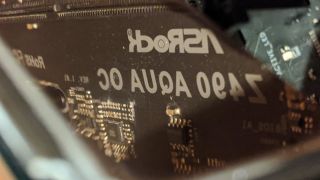
Lapping, or a better term is probably ‘flattening the IHS,’ is what extreme overclockers (XOCers) and even some hardcore ambient users do to try to flatten both the chips’ heatspreader and the mating surface of a water block, air cooler, or LN2 container. That makes for a flat and even mating surface. Flatter surfaces require less thermal paste because it minimizes the voids and imperfections that have to be filled by thermal paste. It’s a simple equation: The thinner the layer of grease between the cooler and the hot heat spreader, the better the temps. The better the temps, the better the overclocking.
If you want to see lapping, search that on YouTube. If you’re like me, be prepared to look down at the clock and see that it’s 2 AM and you wasted your entire night watching people lap and perfectly ‘true’ (make flat) the surfaces.
Stay On the Cutting Edge: Get the Tom's Hardware Newsletter
Get Tom's Hardware's best news and in-depth reviews, straight to your inbox.
So, how accurate can a guy, a pane of glass, sandpaper and a five gallon bucket of elbow grease get, you might wonder? Well, even for a neanderthal like me being cautious (but not careful), I got it down to a 0.01mm difference from edge to edge on the IHS (see below).
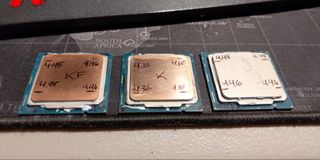
Is the Core i9-10900K Hot or Not?
I was shocked when I first read that some leakers claimed the 10900K runs extremely hot. I had the exact opposite reaction. If so, how can I OC to 5.4 GHZ and not break 80C when the chip is under load? Well, it turns out motherboard companies are partially in charge of their own proprietary “boost” settings. These settings are based on taking a group of processors, seeing what they can handle voltage-to-MHz wise, and then taking an average. Some reviewers even showed Core voltage as high as 1.45V at default settings! That’s because many motherboards will turn on “multi core enhancement” by default, which locks in the turbo clock to all cores.
At 1.45v for 5-5.1 GHz, that’s a full 100mv more than what I use at 5.4 GHz on my CPU that loves to eat voltage. Is this to trick reviewers, or to confuse the public? You decide. I wish motherboard companies would leave well enough alone and rely on standards instead of playing tricks, but maybe it's just an oversight. There’s plenty of drama in the world at the moment without questioning this, so let’s get back to the positive.
Overclocking Memory and the Core i9-10900K
Moving on, the memory controllers on the 10900K also appear to be an improvement over the controllers on the 9900K. It’s no struggle at all to hit frequencies above 4800MHz with low latency. 4000MHz and super low latency is also not a problem. Overclocking with 16GB sticks also seems to show a great improvement as well.
What I Used to Overclock the Core i9-10900K
To get a sense of how well you can overclock the Intel Core i9-10900K, I tried it in two different testing scenarios, first with an AIO liquid cooler and then with my no-holds-barred LN2 (liquid nitrogen) cooling setup.
Ambient Cooling Test Bed
- ASRock Z490 Aqua Prototype 2 Dimm Motherboard
- Intel Core i9-10900K
- G.Skill NEO 4000C19 2x16GB
- Enermax Maxtytan 1250W PSU
- Enermax Aquafusion 120x2 AIO
- Thermal Grizzly Kryonaut LHE
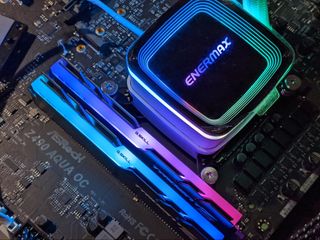
Subzero Cooling Test Bed
- ASRock Z490 Aqua Prototype 2 Dimm Motherboard
- Intel Core i9-10900K
- G.Skill NEO 3800C14 2x8GB
- Enermax Maxtytan 1250W PSU
- Custom High Surface Area Copper Ln2 Cooling Pot
- Thermal Grizzly Kryonaut LHE

Software
Cinebench R20
ASRock provided me with a prototype 2-DIMM version of the Z490 Aqua motherboard that should improve memory overclocking. I don't have a 4-DIMM version here to compare, but beyond the two slots being removed, the motherboard has the same VRM, and same components, etc., as the retail version. Judging by the success I had on this 2-DIMM version, I would more than expect the OC Formula line to be resurrected in the mainstream segment for Z5**.
Overclocking the Core i9-10900K with AIO Cooling
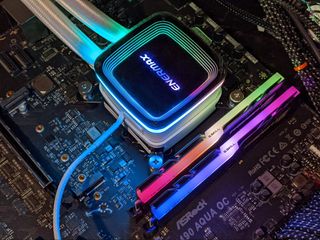
I used the Enermax Aquafusion 120mm x2 cooler to give me an idea of what the chips will do on a normal ambient AIO-cooled system. Overclocking for the sake of benchmarking is not equivalent to 100% stability by any means, but I will try to split the difference by using a heavily-threaded benchmark with AVX instructions for extra punishment. Cinebench R20 fits the bill.
On ambient cooling with the AIO, the Core i9-10900K is very basic and overclocks like a 9900K, but with a little less heat and a little more headroom. Not much tweaking can be done – changing the core voltage, system agent and the input/output voltage is about all that’s needed to max out the chip.
The Aquafusion was able to run the Core i9-10900K all the way up to 5.3 GHz at a 1.3Vcore and temperatures in the low 70’s. That’s a testament to how cool these processors run for being 10 core units.
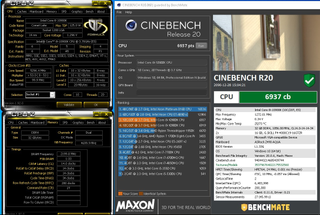
Overclocking the Intel Core i9-10900K with LN2
It took some time to solve a few cold bug issues I encountered when I ran the chip on LN2, but when you work closely with top players in the industry that help debug the problems you’re having, there is such a sense of satisfaction when you solve them. Instead of just loading an LN2 profile and following a guide on what works, you have to test and problem solve. That can be a struggle at times, but it’s satisfying. That satisfaction is immeasurable when you defeat your competitor.
This is exactly what happened when I shocked ASUS by beating the results they achieved using liquid helium (-269C) with lowly liquid nitrogen (-196c), which is peasant-class in comparison. Liquid helium is the proverbial “pay to play” of extreme overclocking. It’s priced outrageously, and a full $4,000 tank can be gone in 30 minutes. Liquid nitrogen is “cheap” in comparison; 180 liters will cost you around $200-350 on average and last for days and days of benching.
As a competitive guy, I wouldn't say that I’m salty about others using liquid helium, but it definitely distorts the playing field. But I’ll never look down on anyone pushing things to the next level.
Once the problems with the cold bug were solved on my end, the scores started to roll in. I was able to push threaded benchmarks over 7 GHZ without much problem. This is a higher frequency than the best 9900K’s on record, by far.
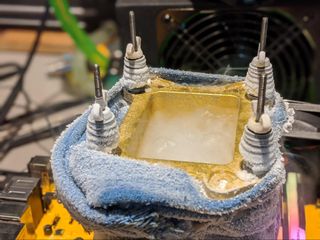
Records achieved
- Cinebench R11.5 10900KF @ 7036mhz
- Cinebench R15 10900K @ 7003mhz
- Cinebench R20 10900KF @ 6935mhz
- Wprime1024 10900K @ 7085mhz
- GPUPi for CPU 1B 10900K @ 7081mhz
- Geekbench3 MultiCore 10900K @ 7000mhz
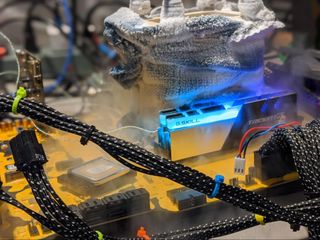
At the end of the day, these chips couldn't be more fun to overclock. You have incredible headroom, plenty of voltage scaling, and thanks to competition, a fair price for what it is. If you enjoy optimizing your system and benchmarking, this is the platform you would most likely enjoy spending your money on.
A world-champion competitive overclocker who frequently tops the charts at HWBot, a site which tracks speed records, Allen will do just about anything to push a CPU to its limits. He shares his insights into the latest processors with Tom’s Hardware readers from a hardcore, push-it-to-the-limit overclocker’s perspective.
-
usiname "At 1.45v for 5-5.1 GHz, that’s a full 100mv more than what I use at 5.4 GHz on my CPU that loves to eat voltage. "Reply
Easy with golden sample and $1200 motherboard, now take 10 random units from any retailer and make them to run at 1.35V with 5.4GHz and motherboard under $250 -
bit_user Congrats on your overclock and thanks for the writeup. I'm amazed at your lapping results!Reply
However, to be honest, the main reason I clicked was to see how how much power the chip burned at 7 GHz. Please let us know!
Thanks.
: ) -
Deicidium369 Reply
I preordered 3 i9900Ks - 2 of them were silicon lottery winners - 5.0 all cores, no issue, no heat, minimal additional voltage - the 3rd was throttling at 4.9 all cores - Exact same motherboard, exact same paste, exact same cooler. Returned it, the replacement was much better, but not to the level of the other 2. Alot to be said for getting lucky.usiname said:"At 1.45v for 5-5.1 GHz, that’s a full 100mv more than what I use at 5.4 GHz on my CPU that loves to eat voltage. "
Easy with golden sample and $1200 motherboard, now take 10 random units from any retailer and make them to run at 1.35V with 5.4GHz and motherboard under $250
So you are saying that he has a special sample of the CPU (maybe) and it's his $1200 motherboard (maybe)
So will you be posting YOUR results with the 10 rando samples and the $250 motherboard? -
usiname Idk why you talking about silicon lottery winner with 9900ks which make 5ghz with additional voltage , when this is the minimum for this cpu with stock settings, you are more like loser not to mention the expensive motherboard which you have and 9900ks 4.9? Sorry man.Reply
I don't say he have bad results or he can't overclock, but he changing the lid, using second generation of motherboard with first generation costing $1100 and talking how 10900k run cool and nice not to mention that he have a golden sample -
"I was shocked when I first read that some leakers claimed the 10900K runs extremely hot. I had the exact opposite reaction. If so, how can I OC to 5.4 GHZ and not break 80C when the chip is under load? ".
In real life you must to be extremely lucky to get something like this, look at your experience with 9900ks. -
bit_user Reply
Was he? He said "3 i9900Ks" (note the lower-case "s"), which could mean "three i9-9900K chips", not "three i9-9900KS chips".usiname said:Idk why you talking about silicon lottery winner with 9900ks which make 5ghz with additional voltage , -
usiname Yes, my bad, but still I have friend with 6500 non K clocked to 4.9 and two more frends with 7700k, the first with 5.1 and the second 5.2GHz with 1.35V and 3-4 years later the best of the best samples barely reach 5.4 with copper lid. This is not progress, even the IPC is same with little bump of 3-4% for kabby and 4 years later everything is same, with more cores. 4 years ago AMD was with Trash-dozer and now they have Zen 2 and Zen 3 is coming in the next months.Reply -
SwankJohnson ReplyAdmin said:World-leading competitive overclocker Splave explains how he pushed the Core i9-10900K to new limits.
How I Overclocked Core i9-10900K to 7-GHz and Set World Records : Read more
So, I bought a pre-built computer and I'm pretty sure my system is overclocked (my temperatures run high on idle and in games) and was wondering if you could make a tutorial on how to disable overclocking for this setup?
I also have an Nvidia 3080 TI not sure how to check if that has been overclocked as well. -
bit_user Reply
You're commenting on an old news article, which not many people will see.SwankJohnson said:So, I bought a pre-built computer and I'm pretty sure my system is overclocked (my temperatures run high on idle and in games) and was wondering if you could make a tutorial on how to disable overclocking for this setup?
I also have an Nvidia 3080 TI not sure how to check if that has been overclocked as well.
I don't have the expertise to answer your questions, but I'd suggest posting them here:
https://forums.tomshardware.com/forums/overclocking.4/
(if the link doesn't work, try copying and pasting it into the address bar of your browser.)

